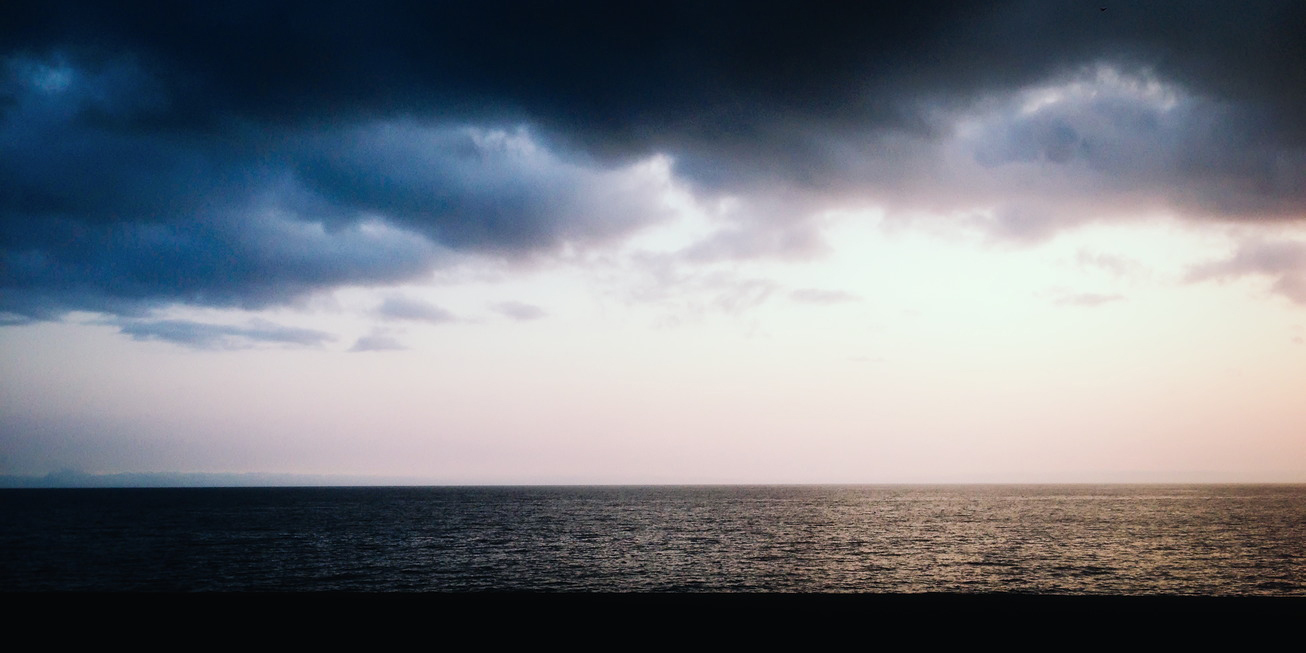
Mar violento
for wind orchestra
Honorable mention, Banda Sinfónica Portuguesa Prize for Composition.
Premiered March 18, 2018
Sala Suggia, Casa da Música, Porto
Banda Sinfónica Portuguesa, cond. Pedro Neves
Complex textures compel particular modes of listening. Several lines, redundant amongst themselves in their morphology, divert our attention to their interrelations instead. A homophonic chorale, for example, is perceived as a block, despite the internal coherence and melodic independence of its voices. Harmony is what emerges instead as perceptually salient — that is, the total sum of the voices’ intervalic relationships, not their melodic contour.
The same happens with the exact opposite. The absence of any kind of morphological redundancy — when all lines are too different amongst themselves — also promotes a general and textural listening. In this case, the perception of voices — if their extreme internal variety even allows them to be perceived as such, that is — gives way to another kind of global hearing: one that is much more sensitive to timbre and dynamics instead. Outlines sharpen in relief, suggesting an almost pictorial game between figure and ground.
These two extremes delineate a continuum between textures of lines which are highly redundant and lines which are highly differentiated. This piece exploits and explores that continuum, generating and controlling complex textures built out of the vertical and horizontal accumulation of sonic events.
In this imaginary continuum between redundancy and singularity, heterophony would occupy something of a middle ground. Heterophony was always a particularly dear compositional resource to Luciano Berio — one he would explore throughout his career. His orchestral works expand on heterophony as he received it from Debussy and Mahler. After reaching its mature expression in the ’80s, in pieces such as Requies or Formazioni, it becomes a staple of his writing until the end of his life. While also conceiving of material as point and mass, this writing retains a closer connetion to traditional orchestration.
This piece also joins the long and storied succession of works evoking the sea. Its incredible force and unfathomable dimension — “era muito difícil frente a mim/compreender esse território absoluto”, wrote José Tolentino Mendonça – has instigated composers in the direction of systematic metaphors such as barcarole rhythms that mime its waves, brilliant fifth-based harmonies that suggest the silver sheen of its surface, or heroic tuttis that evoke the maritime epics of literature. Many of these systematic metaphors are still employed today. However, a very observable shift in the conventions of its depiction has taken place. What seems to beguile both the composers of today and as well as those from before, when facing the sea, is its awe-inspiring presence, well beyond our human scale. The vertical, heroic tuttis have been hollowed out, in detriment of the depths of the orchestral register. Likewise, dense harmonies of dragging undercurrents have since replaced that surface sheen. It is as if we have been swallowed by the sea, no longer capable of navigating its surface.